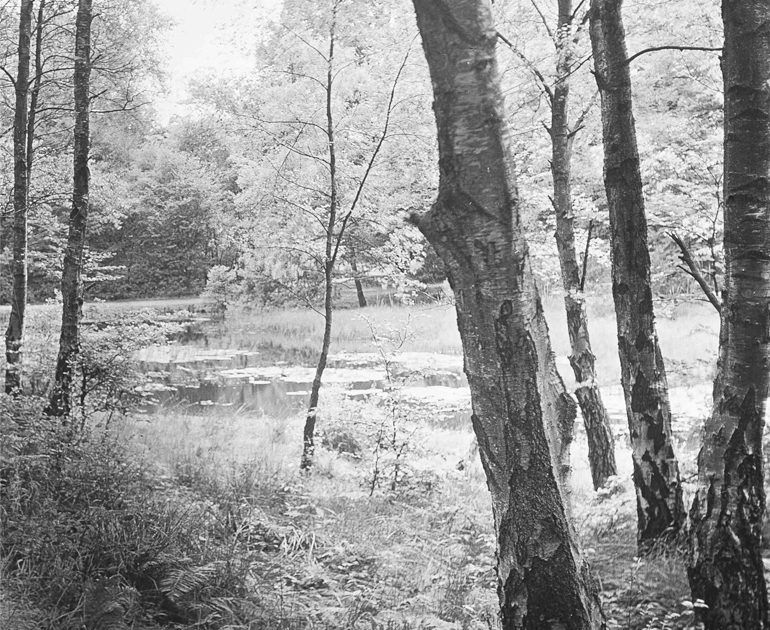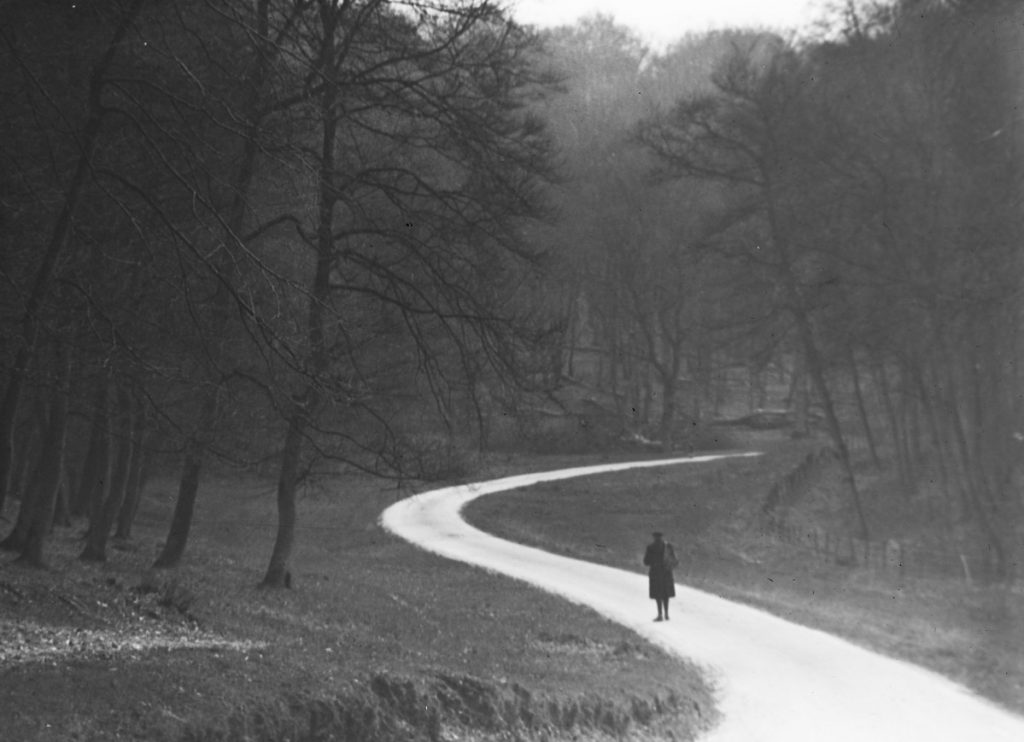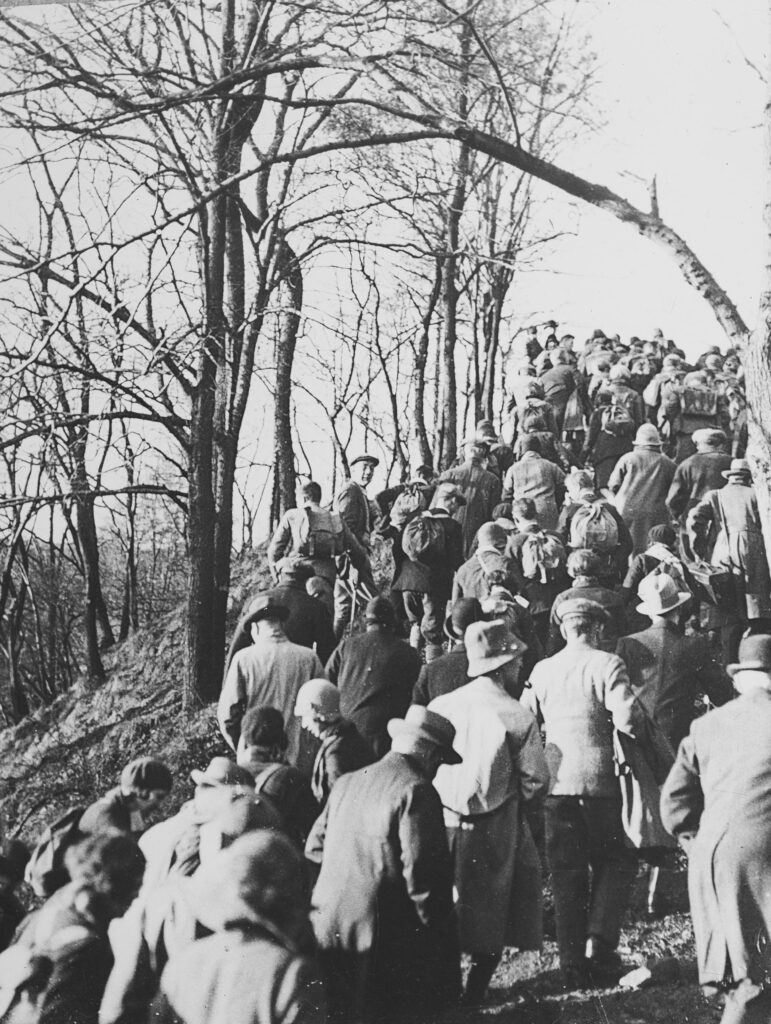Exploring Lantern Slides of the Open Spaces Society
Our online exhibition Lantern Slides of the Open Spaces Society features highlights from the more than one thousand images in our Open Spaces Society Collection.
On this accompanying page, find out more about the contents of the online exhibition. Learn about the history of lantern slides, and explore the four predominant themes that can be found throughout the collection.
What are lantern slides?
Lantern slides were projected through a Magic Lantern, an early type of projector that remained common until the 1950s. The Open Spaces Society’s lantern slides date from between 1900 and 1940. They were probably used to illustrate talks promoting the society’s campaigns and to celebrate the acquisition of many sites by the National Trust, the City of London and local councils.
Most of the slides depict landscapes in the south-east of England, where the OSS focused its early legal battles to save places such as Hampstead Heath in north London and Burnham Beeches in Buckinghamshire.
Collection themes
1) Ancient woods and forests
Ancient woods and forests are a key element of the British landscape. Old oaks have long been a symbol of national identity as well as part of local folklore. Ashdown Forest in Sussex, the New Forest in Hampshire, and Burnham Beeches in Buckinghamshire are among the ancient forests represented in the OSS collection.
2) Rural idylls
Many of the images in the OSS collection are of traditional English rural scenes, including rolling chalk downland, village greens surrounded by thatched cottages, rocky coastline, and rope ferries crossing nature-rich rivers.
The countryside preservation movement of the late 19th and early 20th centuries was part of a wider cultural phenomenon that promoted these types of landscape as a ‘rural idyll’. The growth of rambling, cycling, and other outdoor leisure pursuits popularised access to the countryside. The Arts and Crafts movement and popular literature idealised traditional rural life and landscapes.
But in many ways, the ‘rural idyll’ had always been a myth rather than reality. The English countryside was undergoing major changes from the agricultural depression of the 1870s onwards. The lantern slides hide poverty in the countryside, and the impact of mechanisation and the influence of urban culture on rural life. Being focused mainly on southern England, also, they don’t represent the full range of landscapes of the UK.
3) The intrusion of the modern
The countryside was not stuck in the past: it was always adapting to the modern world. In the early 20th century, the Open Spaces Society and other preservationist groups such as the Council for the Preservation of Rural England (CPRE) feared that ugly features of urban life were spoiling the natural beauty of the countryside.
Urban intrusions included:
- the development of housing and suburban buildings along roads (ribbon development), especially of bungalows, petrol stations, and caravans;
billboard advertising; - telephone, telegraph and electricity power lines;
- litter and fly-tipping.
Societies were set up to campaign against specific issues, such as the Society for Checking the Abuses in Public Advertising (SCAPA, formed in 1893) and the Roads Beautifying Association (1928). These groups, however, could never keep urban life separate from the rural.
4) Obstruction and trespass
The access to the countryside movement is often associated with Mass Trespass, most famously at Kinder Scout in the Peak District in 1932. Though there are some examples of mass trespass demonstrations in the lantern slides, including near Bingley in Yorkshire in 1930, it was a controversial tactic.
More often, the OSS and other groups including the Ramblers’ Association preferred to undertake small individual actions such as removing barbed wire and barriers that had been laid across footpaths. Legal challenges to landowners closing or ‘stopping up’ footpaths, publicising rights of public access, and managing land purchased for preservation remained at the heart of Open Spaces Society campaigns.
Find out more about the Open Spaces Society
Explore the Open Spaces Society Collection on our Virtual Reading Room, visit the Open Spaces Society website, or learn more about the collection and the Society’s work on the pages below.





